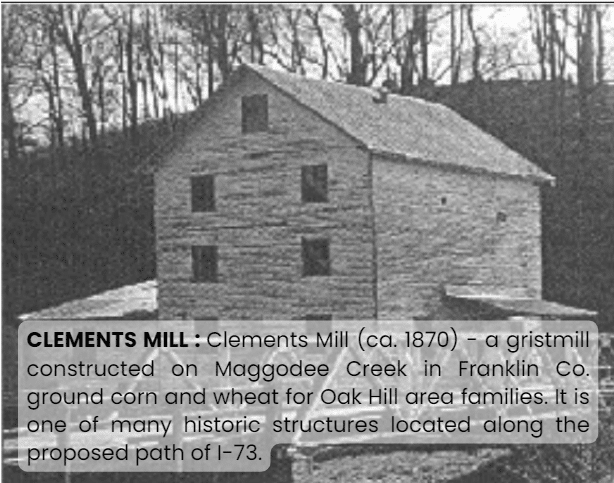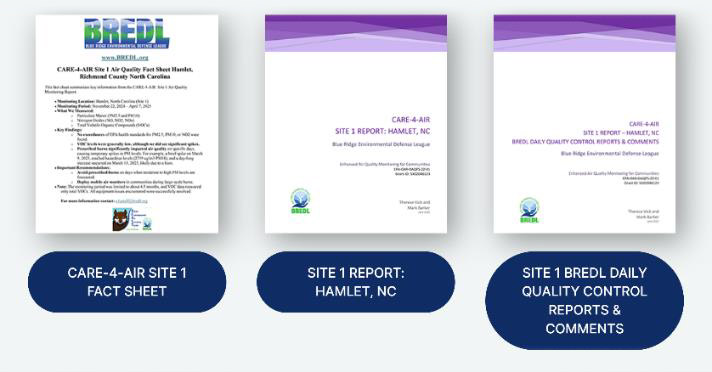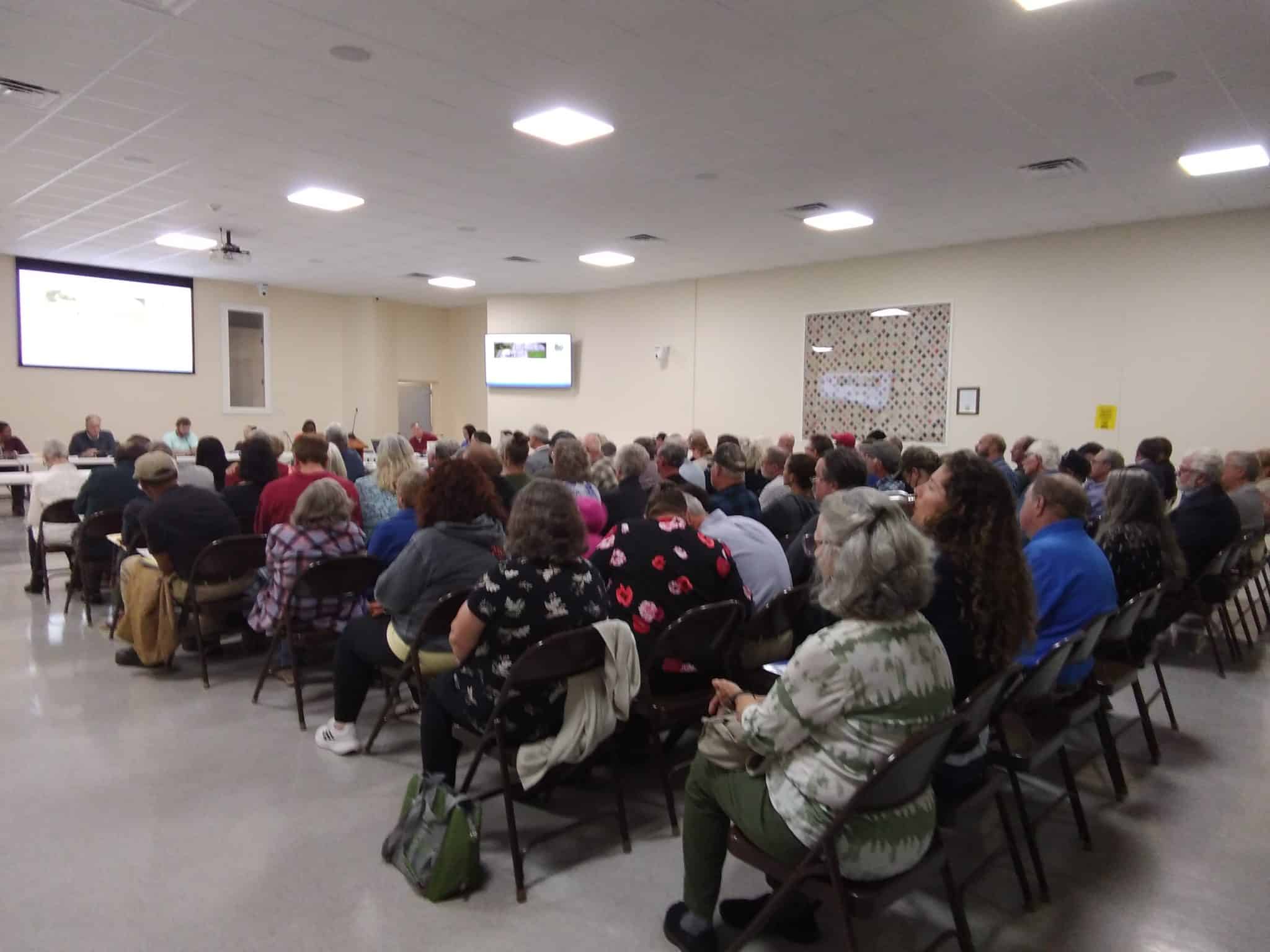 On September 17, the Virginia Commonwealth Transportation Board voted unanimously to rescind their May, 2001 approval of the I-73 corridor location. This vote is a victory for BREDL’s chapter, Virginians for Appropriate Roads, which was formed in 1999 and worked actively to prevent construction of I-73 for over a decade.
On September 17, the Virginia Commonwealth Transportation Board voted unanimously to rescind their May, 2001 approval of the I-73 corridor location. This vote is a victory for BREDL’s chapter, Virginians for Appropriate Roads, which was formed in 1999 and worked actively to prevent construction of I-73 for over a decade.
In 1998, a number of local citizen groups began organizing against I-73 – groups such as Citizens Concerned about I-73 and Friends of Franklin County (both based in Franklin County), the I-73 Regional Impact Network and Virginia Action for Sustainable Transportation (both in Roanoke County), Blue Ridge Concerned Citizens (Botetourt County), and Gainsboro Neighborhood Alliance, Riverland Alert Neighbors, and National Network for No New Highways (all in City of Roanoke). These groups began communicating with local, state, and federal elected officials, learning about the process involved in approving I-73, investigating legal options, communicating with our neighbors, and taking first steps to develop a consensus about what we should be doing to stop I-73.
One of the major discoveries during this period was of a technique called access management (www.accessmanagement.info) being developed and promoted by Federal Highway Administration and Virginia Department of Transportation (VDOT) as an effective tool for improving the safety and traffic carrying capacity of older roads like U.S. 220 without having to build new highways to replace them. VAR was never able to get VDOT or FHWA to talk with us about putting access management on U.S. 220 as an alternative to building I-73 through our region’s mountains, forests, and farmland.
In 1999 VAR became a chapter of Blue Ridge Environmental Defense League (BREDL), conferring 501(c)3 nonprofit status, so that all donations made to VAR would be fully tax deductible. The same year, I-73 was featured in Road to Ruin, a publication by Friends of the Earth and Taxpayers for Common sense, naming I-73 as one of the nation’s 20 most destructive highway projects. VAR also began working with a nationally-recognized historic preservation attorney named Andrea Ferster, who provided guidance on the legal significance of historic resources in the path of I-73. Andrea coached us step by step, week by week, year by year, for over a decade, in how to have standing in the issues of National Environmental Policy Act (NEPA) and in her area of expertise, the National Historic Preservation Act. For the first eight years or so, Andrea did not charge us a dime. It was not until we actually took Federal Highway Administration to court under NEPA that Andrea charged, and then it was a deeply discounted rate for the grassroots.
In 2000, VAR fought for and won status as a Consulting Party, which gave us special rights in the federally-mandated identification of historic properties in the path of I-73. The same year, VAR hired a historic preservation consultant, Harry Reem, who began coordinating the efforts of local historians in the City of Roanoke and Roanoke and Franklin Counties to research local history and identify historic resources in the path of I-73 that VDOT’s taxpayer-funded surveys did not find. Mr. Reem’s surveying, mapping and analysis were summarized in several thick reports on the properties’ potential eligibility for listing in the National Register of Historic Places, a designation that would trigger an added layer of federal protection for these buildings and neighborhoods. The effort to seek Consulting Party status and the hiring of Harry Reem were both pursued by VAR through the guidance, education, and support of our attorney, Andrea Ferster.
In October, 2002, the Keeper of the National Register of Historic Places agreed with Harry Reem’s assessment of the historic eligibility of an urban historic district, Southeast Roanoke, which was built during Roanoke’s heyday as an industrial center and maintains much of the original housing and road patterns from its period of historic significance, the early 20th century.
In a 60-page report dated July, 2003, VDOT requested that the Keeper of the National Register reverse her October, 2002 decision regarding Southeast Roanoke’s eligibility for inclusion in the National Register of Historic Places. VDOT’s report argued that a new, smaller historic district should replace the district that VAR identified through field surveys and research performed in 2002 by our historic preservation consultant, Harry Reem. VDOT’s proposal to “shrink” the Southeast Roanoke district would allow room for I-73 to be built along the Roanoke River between Riverland and Old Southeast communities in downtown Roanoke.
In Sept. 2003, Harry Reem submitted a detailed report to the Keeper of the National Register defending the eligibility of the Southeast Historic District. Federal law prohibits use of land from historic sites for construction of federally-funded highways such as I-73, and VAR’s identification of Southeast Roanoke as a historic district would force VDOT to reconsider their options for I-73’s routing through the City of Roanoke. So the stakes were very high.
In 2004 VAR’s historic preservation work paid off. The Southeast Roanoke Historic District identified by Harry Reem four years earlier was named eligible for listing in the National Register of Historic Places by the Keeper of the National Register. This historic designation forced FHWA to re-route I-73 to avoid Southeast Roanoke. The re-routing of I-73 onto the existing U.S. 220 corridor, combined with lack of funding for the project, undermined all momentum to build I-73.
A similar effort to identify historic significance for the Old German Baptist (“Dunkard”) dairy farming settlement in Franklin County fell through, however. The approved path for I-73 actually would have paved over the group’s outdoor baptismal site on the banks of Little Ellie Creek, where they’ve been baptizing since 1965. FHWA refused to allow VAR’s analysis of the historic significance of the German Baptist settlement, as prepared by Harry Reem, to be submitted to the Keeper of the National Register.
In February, 2006, The Franklin County Board of Supervisors voted unanimously in support of submitting a grant application to the Virginia Department of Transportation (VDOT) Rural Transportation Planning Grant program to obtain funding for a study of implementing access management on the county’s portion of the U.S. 220 corridor and other highway corridors in the county. The board’s action followed the county’s receipt last November of 75 postcards sent by Franklin County residents requesting that the supervisors apply for the VDOT funds.
VAR had formally requested that the County seek the access management study at the board’s December, 20, 2005 meeting, citing Franklin County’s “obligation to be a good steward of the 220 corridor, which is an important regional and multi-state transportation facility that should be maintained so that it continues to provide a reasonable level of service for Franklin and neighboring counties, even in the event that I-73 is built.”
In November, 2006, in response to the issuance of the Final Environmental Impact Statement (FEIS) for I-73, VAR provided comments of close to 400 pages which stated in precise detail what VAR considers omissions, errors, misstatements of fact and misleading information and arguments made in the FEIS. Comments focused on 13 major areas of concern which have been longstanding sources of contention with the I-73 project throughout its study history, including the impact on the Roanoke logperch (a federally listed endangered species), the threat to the German Baptist Oak Hill community, the failure to study a non-interstate option for building I-73, and the issues surrounding proposed Buck Mountain access to the Blue Ridge Parkway. In addition, comments addressed the manipulated public participation process, shortcomings of the economic impact analyses, the use of “Congressional intent” to prejudice the Purpose and Need, and the inadequacy of the project Re-Evaluation. Careful review of the Biological Assessment for the Roanoke logperch contained in FEIS Appendix E revealed substantive editing changes to the original research document, changes that support pre-determined outcomes regarding potential impacts on logperch populations in favor of the Approved Location Corridor. Also noted was VDOT’s failure to consider new assessment tools for evaluating road impacts to aquatic habitats recommend by US Fish and Wildlife Service, a cooperating agency.
Among the most persistent deficiencies cited and discussed throughout VAR comments was VDOT’s failure to study a U.S. 220 upgrade. Via ongoing communication with VDOT and FHWA, VAR consistently promoted an awareness of reasonable alternatives to building I-73 as an interstate freeway on new alignment, specifically a principal arterial design that would include access management features. VDOT and FHWA contended and stated in the FEIS that such a design concept actually mimics an interstate freeway design option (Option 3) and so does not merit further study. VAR comments include extensive review of communication and report information, as well as VDOT design standards, which clearly contradict the FEIS conclusion.
VAR comments to the FEIS provided a comprehensive and detailed account of VAR’s work to assure the I-73 project complied with the laws and regulations that are in place to benefit citizens and communities. To view them in entirety, please see: https://app.box.com/shared/4gqq3y8450
We also share VAR’s comments on I-73 impacts to the Blue Ridge Parkway: https://app.box.com/shared/hlbfeu3izr
In 2007, FHWA issued a Record of Decision (ROD) for I-73. The issuance of a ROD is FHWA’s statement that all the requirements have been met for environmental review for I-73 as stipulated in NEPA, Clean Water Act, Endangered Species Act, Section 106 of the National Historic Preservation Act, and Section 4(f) of the U.S. Department of Transportation Act. The ROD was FHWA’s way of saying that I-73 had met numerous legal hurdles and was eligible to receive federal funds for engineering studies, right-of-way acquisition, and construction.
VAR sued in 2007 in the Western District of Virginia on the basis of FHWA’s failure to consider the reasonable alternative of upgrading the existing highway, U.S. 220, using access management techniques, and other subjects. We were unceremoniously shot down in the Western District courtroom by Judge James Turk. This was the anticipated outcome, i.e., no surprise whatsoever. We filed an appeal (in his decision, Judge Turk had actually cut and pasted an error of law from FHWA’s legal document). In the course of our appeal, we were offered an out-of-court settlement. By that time – eight years after the peak of the public’s interest and involvement in I-73 – VAR accepted the settlement, which gives VAR standing to sue again if FHWA ever produces a Supplemental Environmental Impact Statement for the I-73 project.
In 2008 VAR, working with Citizens Concerned about I-73, successfully sought Franklin County’s approval to develop the Franklin County Access Management Guidebook with a grant from VDOT. This guidebook would prepare the county for the new paradigm that was about to descend upon local governments throughout Virginia with the General Assembly’s creation of new regulations requiring that access management be implemented on all primary and secondary roads statewide.
In 2020, BREDL’s Executive Assistant, Mark Barker, composed a letter to the CTB. This letter, based on years of research of funding for I-73, asked the CTB to rescind plans to build I-73 in Virginia. BREDL obtained signatures on the letter from twenty I-73 activists, many of them active in the I-73 fight since the mid-1990s. The letter as submitted to the CTB documents in dramatic detail the long-term lack of funding to build I-73 in Virginia and the need to remove the project from the state’s plans. The signed letter is available for viewing at: https://app.box.com/s/cm7sdqwuqd4mjtifuz507rc7nl7dkq6l.
A video of the Commonwealth Transportation Board vote on September 17 to rescind I-73, as well as a WDBJ-7 newsclip of BREDL staff and an I-73 activist providing comments on the CTB’s action can be viewed at: https://drive.google.com/drive/folders/1pFd5QHELfehzahPokzx3nDW_ByKKqEyP for
BREDL staff are planning a celebration event to which we will invite all the I-73 activists for whom we can find up-to-date contact information. Please let Ann Rogers know if you’d like to attend (email → amelvin3@verizon.net).







 On September 17, the Virginia Commonwealth Transportation Board voted unanimously to rescind their May, 2001 approval of the I-73 corridor location. This vote is a victory for BREDL’s chapter, Virginians for Appropriate Roads, which was formed in 1999 and worked actively to prevent construction of I-73 for over a decade.
On September 17, the Virginia Commonwealth Transportation Board voted unanimously to rescind their May, 2001 approval of the I-73 corridor location. This vote is a victory for BREDL’s chapter, Virginians for Appropriate Roads, which was formed in 1999 and worked actively to prevent construction of I-73 for over a decade.


